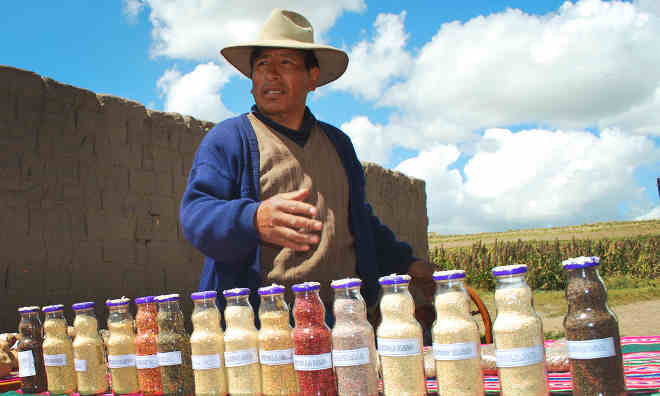Today is the International Day for Biological Diversity, and celebrations are highlighting the relationship between biodiversity and water. Farmers have a unique opportunity to support biologically diverse systems. The International Union for Conservation of Nature (IUCN) reports that humans eat more than 7,000 species of plants and animals, and global agriculture relies on many more, including the roughly 200,000 known species of pollinators. Unfortunately, many modern farming methods rely on wasteful use of water and fertilizer, as well as high levels of environmental pollution, and damage biodiversity instead of working with it. These practices hurt people, too. The U.N. Department of Economic and Social Affairs (UNDESA) estimates that environmental damages from U.S. agricultural water use cost an estimated US$9–20 billion per year. Low diversity of crops can also increase fields’ vulnerability to erosion and pests, and has been reported to decrease food’s nutritional content.
Today, Food Tank is celebrating the International Day for Biological Diversity with five ways food and agriculture can support both sustainable water use and biodiversity:
Take steps to prevent eutrophication
Eutrophication is the excessive growth of organisms, including algae, that changes habitats and kills fish. Eutrophication in the Gulf of Mexico has created a dead zone where no species can live that grows to 15,540 square kilometers (6,000 square miles) each year—bigger than the U.S. state of Connecticut. The Union of Concerned Scientists estimates that fertilizer runoff from corn and soy farms up the Mississippi accounts for 52 percent of nitrogen and 25 percent of phosphorus entering the Gulf of Mexico. Sustainable farming practices, such as growing different plants together in the same field, could protect the Gulf by reducing the need for fertilizers and strengthening soil against erosion. Similar action in Denmark cut nitrogen runoff from farms by 48 percent.
Join The Green Wave
The Green Wave is an annual celebration of the International Day for Biological Diversity that engages children and young people with biodiversity issues. Participants water a newly planted tree at 10:00 am local time on May 22nd, creating a “green wave” traveling west across the planet. Planting trees on farms—on May 22nd and other days—is a great way to support biodiversity, water conservation and sustainable agriculture. Trees can produce specialty crops such as maple syrup, which support beneficial wildlife, and improve the soil’s ability to hold and use water. The Leopold Center for Sustainable Agriculture runs an agroforestry program that helps farmers make the most of trees on their farms.
Harness women’s knowledge of agricultural biodiversity
The U.N. Food and Agriculture Organization (FAO) reports that traditional gendered divisions of labor have left women farmers responsible for breeding new crop varieties, while men focus on growing and harvesting cash crops. Oxfam reports that women worldwide have bred over 7,000 species of crops, selecting for yield, pest resistance, and other traits. The Indian organization Navdanya works with a network of women seed keepers and growers to preserve crop varieties and provide training in biodiversity conservation and organic farming.
Track food’s environmental footprint
The Organization for Economic Co-operation and Development (OECD) estimates that pollution and water use have reduced global freshwater biodiversity by about one-third. With food accounting for 90 percent of personal freshwater use, individual diets have a big impact. In their publication, “The Water We Eat,” the Barilla Center for Food & Nutrition (BCFN) details the relationship between food and water resources, finding water intensive foods, such as corn-fed beef, are also the least healthy.
Eat Invasive Species
Invasive species are a major threat to biodiversity, often outcompeting or actively harming unique native species. Yet while not all of them are safe to eat, many can serve as nutritious food sources. Lionfish, which threaten Caribbean reefs by eating the juveniles of nearly all native reef species, and nutria, large aquatic mammals that are damaging wetlands in the southern U.S. with their voracious appetite for native plants, are two edible invasives. The Institute for Applied Ecology in Oregon hosts an annual Invasive Species Cookoff and published a cookbook last year.
Food security, water resources, and biodiversity are intrinsically linked. Action to protect all of them starts with how we eat.











